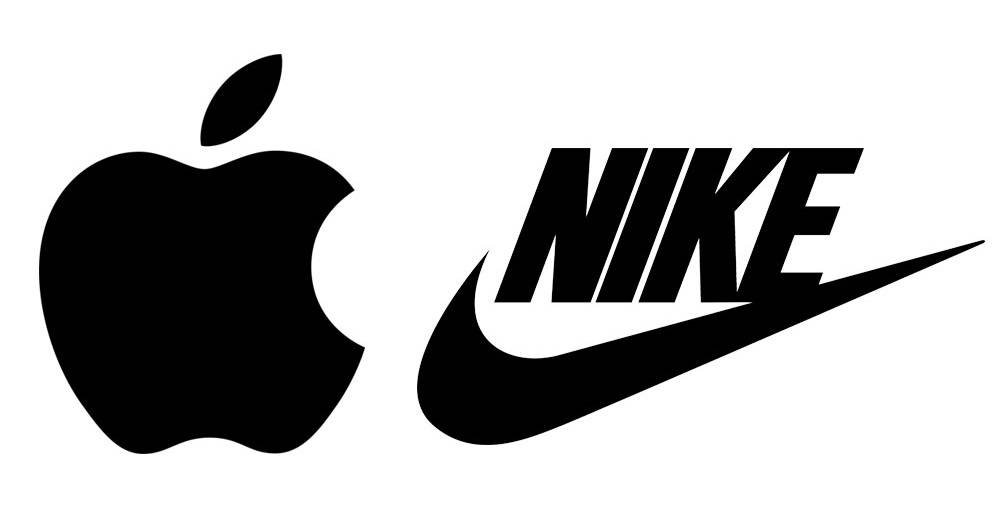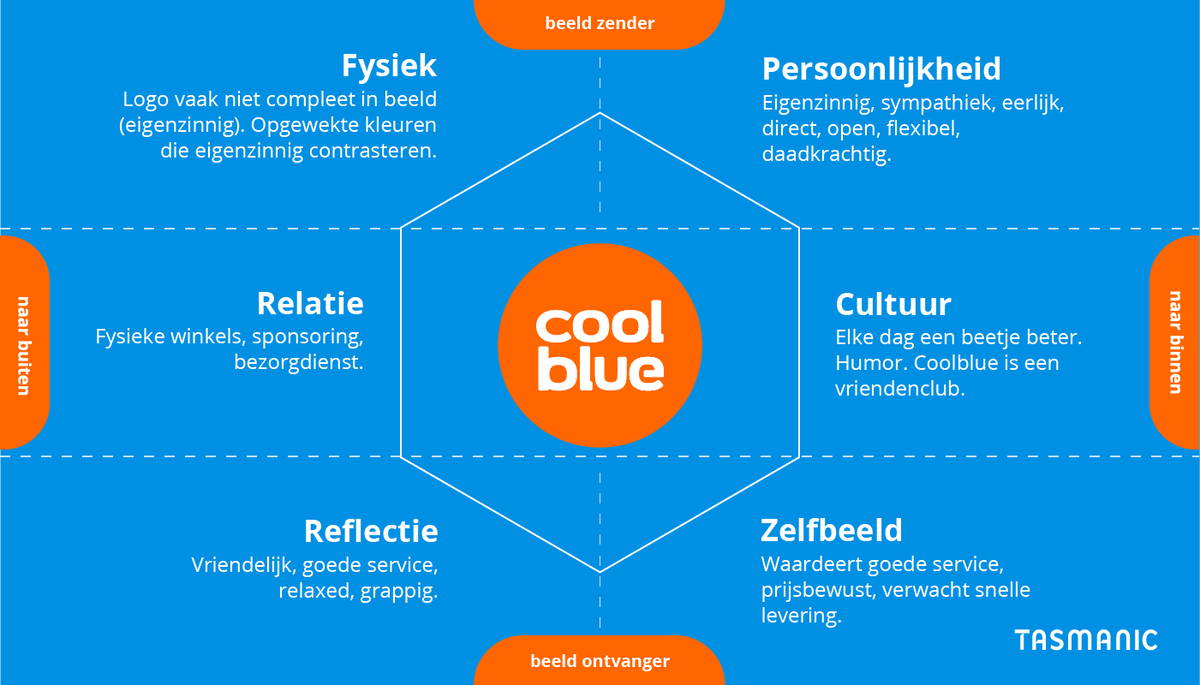
Introduction
In a world where consumers are inundated daily with marketing messages, creating a distinctive and recognizable brand identity is a key to success for businesses. Brand identity, or brand identity, is the essence of how an organization presents itself and is perceived in the marketplace. It goes beyond just a logo or corporate colors. It is a cohesive palette of elements that together define the perception and experience of the brand. In this blog post, we explain what brand identity is, why it is important and how to develop your own brand identity.
What is brand identity?
Brand identity includes all the manifestations of a brand that represent a brand. In addition, brand identity includes a brand's personality, culture and values. So a brand identity goes beyond a corporate identity. However, your corporate identity is part of your brand identity. For example, it includes everything from the logo, color scheme and typography to the tone of communication and style of graphics. These elements must be applied consistently across all marketing materials and customer interactions to form a cohesive image. The goal of a brand identity is to create a clear, unique and distinctive image in the perception of consumers, also called brand image. A brand image that reflects the company's values and personality.
Why is brand identity important?
A strong brand identity builds brand awareness and fosters loyalty, helping a company stand out from the competition. It helps create trust and credibility with consumers. This makes customers more likely to choose your brand.
A consistent brand identity can also improve the effectiveness of marketing efforts by making it easier for consumers to recognize and remember the brand. Research shows that there is a positive relationship between brand recall and brand recognition on the one hand and purchases on the other. In addition, brand identity plays an important role in influencing perception and driving the consumer experience from the first moment of the customer journey.
What does a brand identity consist of?
As you read, a brand identity encompasses all of your company's expressions. Below we have listed the main components of a brand identity.
Logo and name
The logo and name are often the most recognizable aspects of a brand identity. An effective logo is distinctive, visually appealing and reflects your brand's core values. Don't have a logo for your business yet or want to revamp your logo? Then read our article to design or update your own logo. If you don't have a brand name yet, find 12 tips for good branding in this blog post.
Vision and mission
A brand identity goes deeper than your logo, name or slogan. Your identity is your company's DNA. That's why your vision and mission are important elements of your brand identity. Who and what are you as a company and why do you matter? Haven't you thought this through or are you struggling with it? Then read our article on why, how & what by Simon Sinek.
Color palette
Colors arouse emotions and can communicate powerfully. A brand's color scheme should be used consistently across all visual materials to reinforce associations and emotional responses. Much research has been done on color psychology, or how colors can influence people's behavior and perceptions.
Typography
The choice of fonts contributes to the overall appearance and distinctiveness of a brand and can say a lot about a company's character. Designing a recognizable, unique font is the holy grail for many designers. For smaller companies, this probably won't be feasible, but for a strong brand identity, it is important that the font is a good fit for your brand's identity. If you're still looking for a free font, we recommend browsing through Google Fonts.
Tone of Voice
The way a brand communicates, including the choice of words and style of writing, should reflect the brand's personality and again be consistent across all communications.
Image Usage
The style of images, including photography, illustrations and other graphic elements, should fit with the rest of the brand identity and support the brand's values. Like components of your brand identity, consistency is important in this.
Brand identity examples
An iconic example of strong brand identity is Apple. Apple's brand identity revolves around minimalist design and innovation. This is evident in product design, advertising and store design. Another example is Nike, which exudes strength and aspiration through its "Just Do It" slogan and swoosh logo, consistently applied in all marketing statements.

There is also a good example closer to home, namely Coolblue. This company released a brand manual a few years ago, detailing its brand identity and everything around it. This is a must-read for any entrepreneur looking to build a brand identity.
Brand identity prism model
Jean-Noël Kapferer developed the brand identity prism model to look at a brand from different perspectives. The model shows how yourself, as a brand owner, and customers view your brand. The goal is to form a coherent and consistent picture of your brand identity. In the model you can see at a glance if there are any contradictions between the image a brand owner and customers have.
The 6 dimensions of the brand identity prism model are:
- Physical. This refers to the visual characteristics of the brand, such as the logo, colors, packaging and design. This dimension is the tangible, visible expression of the brand.
- Personality. This describes the human characteristics attributed to the brand. Personality of the brand can be expressed through the tone and style of communication, and the way the brand presents and behaves in different media.
- Culture. This dimension includes the set of values and norms that the brand embodies and conveys.
- Relationship. This aspect refers to the relationship the brand builds with its target audience. This can range from formal and businesslike to friendly and informal, depending on the brand's industry and strategy.
- Reflection. This dimension represents the target audience's perception of the brand. It is not necessarily who the actual consumers are, but who the brand ideally wants to attract.
6.Self-image. This is the image consumers have of themselves when they use the brand. It refers to the personal preferences consumers have in relation to the brand.
We applied the brand identity prism model to Coolblue. As you can see, Coolblue succeeded in developing a cohesive brand identity.

How do you build a strong brand identity?
Now you know what a brand identity includes and have seen some examples. Hopefully, you've been inspired to build a brand identity for your company. So we have created for you the following roadmap for building your brand identity.
- Define your brand values and brand personality. Identify what makes your brand unique and what values you want to convey. Also write down what your vision and mission is. The Brand Key model can help with this.
- Research the market. How do you stand as a company in your market? What makes you distinctive, what are your strengths as well as weaknesses? To make this clear, a SWOT analysis can
- Research your target audience. Who are your (intended) customers, what do they care about and what problems do they face? How can you as a brand help them?
- Develop your visual elements. Create or choose a logo, select a color palette and choose your desired typography. All of these elements must be consistent with your brand identity. These elements must also be consistent in all your expressions. Online and offline.
- Define your tone of voice and communication style, also called brand voice. Develop a tone of voice that fits your brand personality. This should also be consistently conducted online and offline throughout your entire organization. Coolblue is another good example of a company that does this excellently. All employees from store employees to delivery drivers are trained to convey the company's culture.
- Implement brand identity across all channels. Ensure that all touchpoints with customers consistently reflect your brand identity.
- Evaluate and adjust as necessary. Measure the impact of your brand identity and be open to adjustments to stay relevant. Involve your customers in this process. They can provide valuable feedback and also act as ambassadors for your company.
We wish you much success in building your brand identity and building a strong brand.
Are the results from your online marketing disappointing?
Request our no-obligation performance scan and we'll tell you where you're going wrong.

















 Team
Team FAQ
FAQ Vacancies
Vacancies Contac
Contac AWR
AWR Ahrefs
Ahrefs Channable
Channable ContentKing
ContentKing Leadinfo
Leadinfo Optmyzr
Optmyzr Qooqie
Qooqie Hubspo
Hubspo Semrush
Semrush




